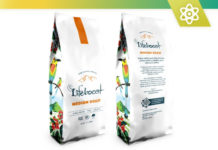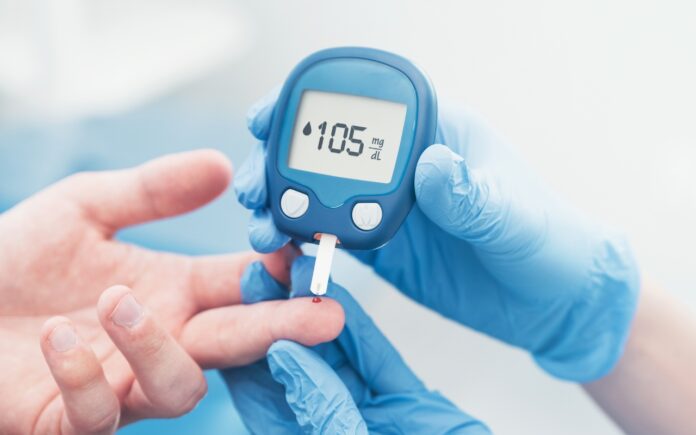Type 2 diabetes is a chronic condition that affects millions of people worldwide. It occurs when the body becomes insulin resistant or the pancreas cannot produce enough insulin. As a result, glucose builds up in the blood instead of being used for energy, leading to various health complications. The good news is that type 2 diabetes can often be prevented or delayed through lifestyle changes. This article will explore comprehensive strategies and tips to help you reduce your risk of developing type 2 diabetes, encouraging an informed and healthy approach to life.
Understanding Type 2 Diabetes
Type 2 diabetes is the most common form of diabetes, accounting for approximately 90-95% of all diabetes cases. Being overweight or having obesity, getting insufficient physical activity, or having prediabetes are significant risk factors. Prediabetes is a condition where blood glucose levels are higher than usual but not yet high enough to be classified as type 2 diabetes. This condition significantly increases the risk of developing full-blown diabetes if not addressed.
Risk Factors for Type 2 Diabetes
Understanding the risk factors associated with type 2 diabetes is crucial in taking preventive measures. Key risk factors include:
- Age: Individuals over 45 years old are at a higher risk.
- Weight: Being overweight or having obesity is a significant risk factor.
- Family History: A parent or sibling with type 2 diabetes increases your risk.
- Ethnicity: African Americans, Alaska Natives, Native Americans, Asian Americans, Hispanics or Latinos, Native Hawaiians, and Pacific Islanders are more susceptible.
- High Blood Pressure: Hypertension and high LDL cholesterol levels are linked to higher diabetes risk.
- Physical Inactivity: Being active less than three times a week.
- Gestational Diabetes: Women who have had diabetes during pregnancy or who gave birth to a baby weighing more than nine pounds.
- Polycystic Ovary Syndrome (PCOS): This condition, where ovaries produce higher-than-normal amounts of male hormones, also increases the risk.
Symptoms to Watch For
Type 2 diabetes symptoms often develop slowly over time and can go unnoticed. Common symptoms include:
- Increased thirst and hunger
- Frequent urination
- Unintended weight loss
- Fatigue
- Blurred vision
- Slow-healing sores or frequent infections
- Numbness or tingling in hands or feet
Because symptoms can be subtle, you must talk to your doctor if you're at risk or notice any unusual changes in your health.
Prevention Strategies
Setting a Weight-Loss Goal
One of the most effective ways to prevent type 2 diabetes is by maintaining a healthy weight. Research indicates that losing 5-10% of your body weight can significantly reduce your risk. For instance, if you weigh 200 pounds, aiming to lose 10-20 pounds can vastly improve your health. This goal should be approached with a realistic and sustainable plan, prioritizing gradual weight loss over time.
Healthy Eating Habits
A balanced diet is crucial for weight management and diabetes prevention. Implementing the following dietary changes can make a substantial difference:
- Reduce Calorie Intake: Follow a reduced-calorie diet that includes a variety of nutrient-dense foods.
- Low-Fat Options: Opt for low-fat or fat-free versions of dairy products and dressings.
- Increase Fiber: Eat more fruits, vegetables, and whole grains, which are high in fiber and help regulate blood sugar levels.
- Limit Sugars and Refined Carbs: Avoid sugary drinks, sweets, and refined carbohydrates, which can spike blood sugar levels.
- Healthy Fats: Include healthy fats in moderation, such as those found in nuts, seeds, avocados, and fish.
Regular Physical Activity
Incorporating physical activity into your daily routine is imperative for diabetes prevention. Aim for at least 30 minutes of moderate-intensity exercise, like brisk walking, five days a week. Physical activity helps lower blood glucose levels and improves insulin sensitivity. Start with small changes, such as taking a 10-minute walk during lunch breaks, and gradually increase your activity level.
Tracking Your Progress
Monitoring your progress can help keep you motivated and on track. Use mobile apps, printed logs, or online trackers to record your weight, dietary intake, and exercise routines. Regular tracking provides insight into your habits and highlights areas for improvement. It also allows you to celebrate small victories along the way, boosting your motivation.
Consulting with Healthcare Professionals
Your healthcare team is a valuable resource in your diabetes prevention journey. Regular checkups and discussions with your doctor, nurse, or dietitian can provide personalized advice and support. If necessary, your healthcare provider can help you create a tailored plan, recommend preventive programs, and discuss potential medications like metformin.
Getting Support
Making lasting lifestyle changes can be challenging, but you don't have to do it alone. Seek support from family and friends and consider joining a diabetes prevention program. Programs like the National Diabetes Prevention Program offer comprehensive support, including lifestyle coaching and group sessions to help you stay motivated and committed.
Additional Tips for Healthy Living
Implementing a few more practical tips can enhance your efforts in preventing type 2 diabetes:
- Healthy Eating at Home: Choose low-fat, light, or fat-free versions of common ingredients. Cook with spices rather than salt. Refrigerate or freeze portions to avoid overeating. Opt for fruits instead of sugary snacks.
- Healthy Eating on the Go: Pack lunches to control what you eat, prefer water over sugary drinks, and choose more nutritious options like salads or grilled chicken when dining out.
- Mindful Snacking: Instead of chips or candy, snack on fruits, vegetables, or unsalted nuts. Chewing sugar-free gum between meals can also help curb snacking urges.
- Smart Food Shopping: Make a list before shopping, avoid shopping on an empty stomach, and compare nutrition labels to choose healthier options. Try new fruits or vegetables to add variety to your diet.
- Dining Out: Look at menus ahead of time to choose healthier options, ask about portion sizes and preparation methods, and prefer baked, grilled, or steamed foods over fried ones.
The Importance of Early Detection and Testing
If you're at risk for type 2 diabetes, early detection through regular screening is essential. The Affordable Care Act ensures that insurance plans cover diabetes screening for adults aged 35 to 70. Talk to your doctor about getting tested, especially if you have risk factors like high blood pressure or a family history of diabetes. Early identification of prediabetes can prompt timely interventions to prevent the progression to type 2 diabetes.
Making Lifelong Changes
Adopting and maintaining healthy habits is a lifelong commitment. It's normal to experience setbacks, but staying motivated and keeping your goals in sight is key. Here are some strategies for lasting change:
- Plan: Create a detailed plan with specific, achievable goals. Consider what resources you need and potential obstacles you might face.
- Reward Yourself: Set up small rewards for meeting your goals to stay motivated.
- Stay Flexible: Be adaptable and ready to revise your plan if necessary. It's okay to adjust your goals as you progress.
- Support Network: Surround yourself with supportive friends and family, or find a community group with similar goals.
Conclusion
Preventing type 2 diabetes is not only a possibility but a practical and achievable goal through dedicated lifestyle changes. By focusing on weight management, healthy eating, regular physical activity, and consistent monitoring, you can take proactive steps to lower your risk. Engage with healthcare professionals for personalized advice and use support systems around you to sustain these changes. Remember, even small steps towards a healthier lifestyle can make a significant impact in preventing type 2 diabetes and enhancing your overall well-being. For more information on creating a robust diabetes prevention plan, visit NIDDK's guide and take charge of your health today.













![Bowflex Max Total: 2024 Fitness Workout Exercise Machine [Review] Bowflex Max Total: 2020 Equipment Review For Complete Upper and Lower Body Workout](https://www.advancedliving.com/wp-content/uploads/2019/12/Bowflex-Max-Total-218x150.jpg)


